If you’re looking for an additional source of inflammation relief with less side effects, look no further than this super anti-inflammatory juice recipe! Juicing for inflammation is the fastest way to increase your anti-oxidant and vitamin intake.
Inflammation can cause all sorts of problems in the body, including pain, joint stiffness, arthritis, autoimmune disorders, and even cancer. The good news is that there are anti-inflammatory foods you can juice to reduce inflammation and improve your overall health.
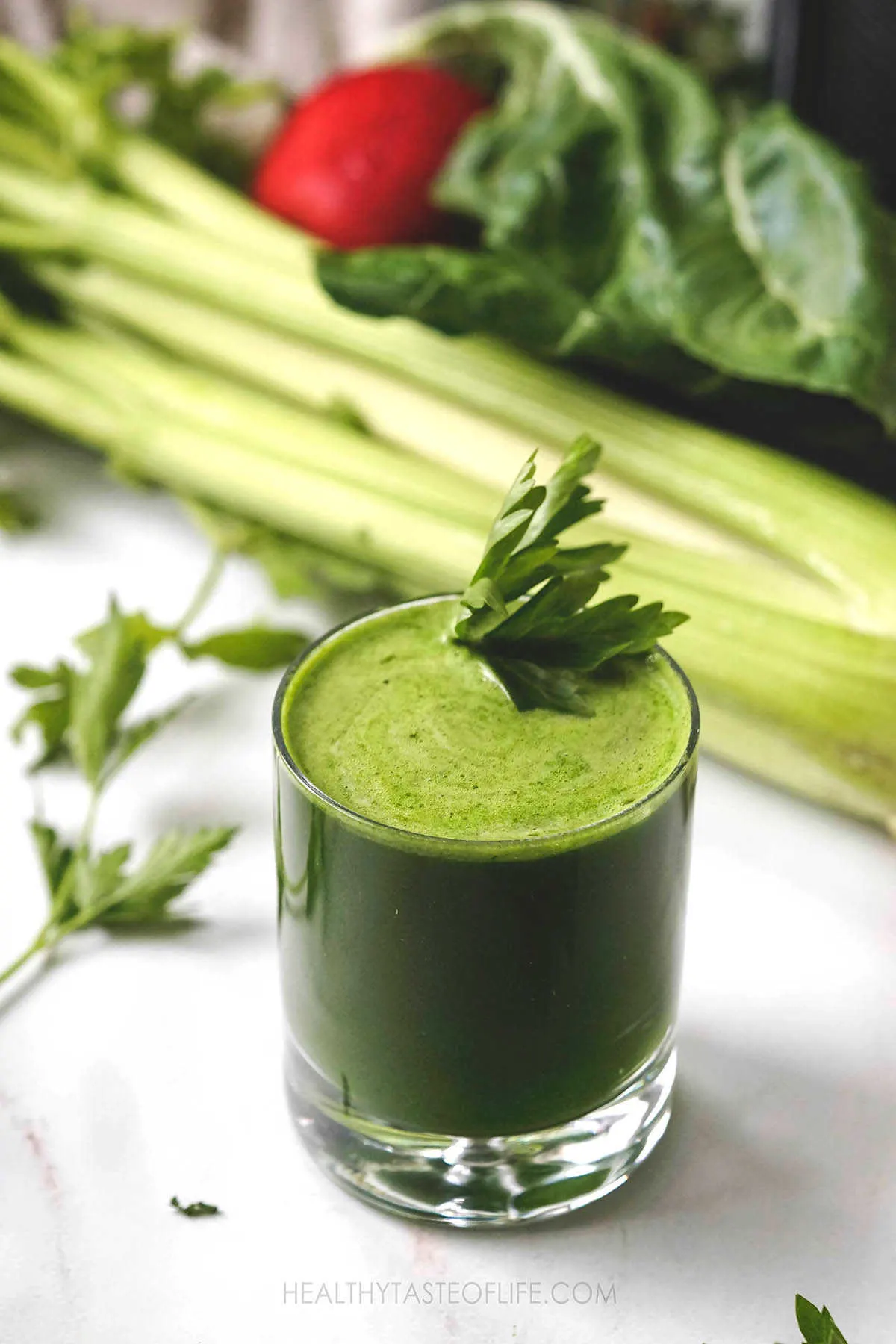
Related: 4 Anti-Inflammatory Green Smoothie Recipes
This super anti-inflammatory juice recipe is loaded with inflammation-fighting ingredients like celery, collard greens, parsley, and apple. Celery and parsley are a great source of luteolin and apigenin that are powerful anti-inflammatory phytonutrients. Collard greens are high in vitamin K, A and C, all of which are powerful antioxidants. And apples are rich in quercetin, a potent anti-inflammatory flavonoid.
Related: Celery Juice: The Benefits, Recipes & Must-Know Tips
Juicing For Inflammation
There are a few reasons why juicing for inflammation is worth giving a try.
- It’s a fast and easy way to get more anti-inflammatory nutrients into your diet, whether you’re following an anti-inflammatory diet or not.
- Can help you detoxify your body by removing inflammatory toxins.
- It can boost your immune system reduce the risk of chronic diseases and speed up the healing process.
- Can help you stay hydrated, which is important for overall health and can also help fight inflammation.
This super anti-inflammatory juice recipe is just one of many ways you can fight inflammation with food. For more tips, be sure to check out this post: Best Anti-inflammatory Foods For Healing At Cellular Level (+PDF List)
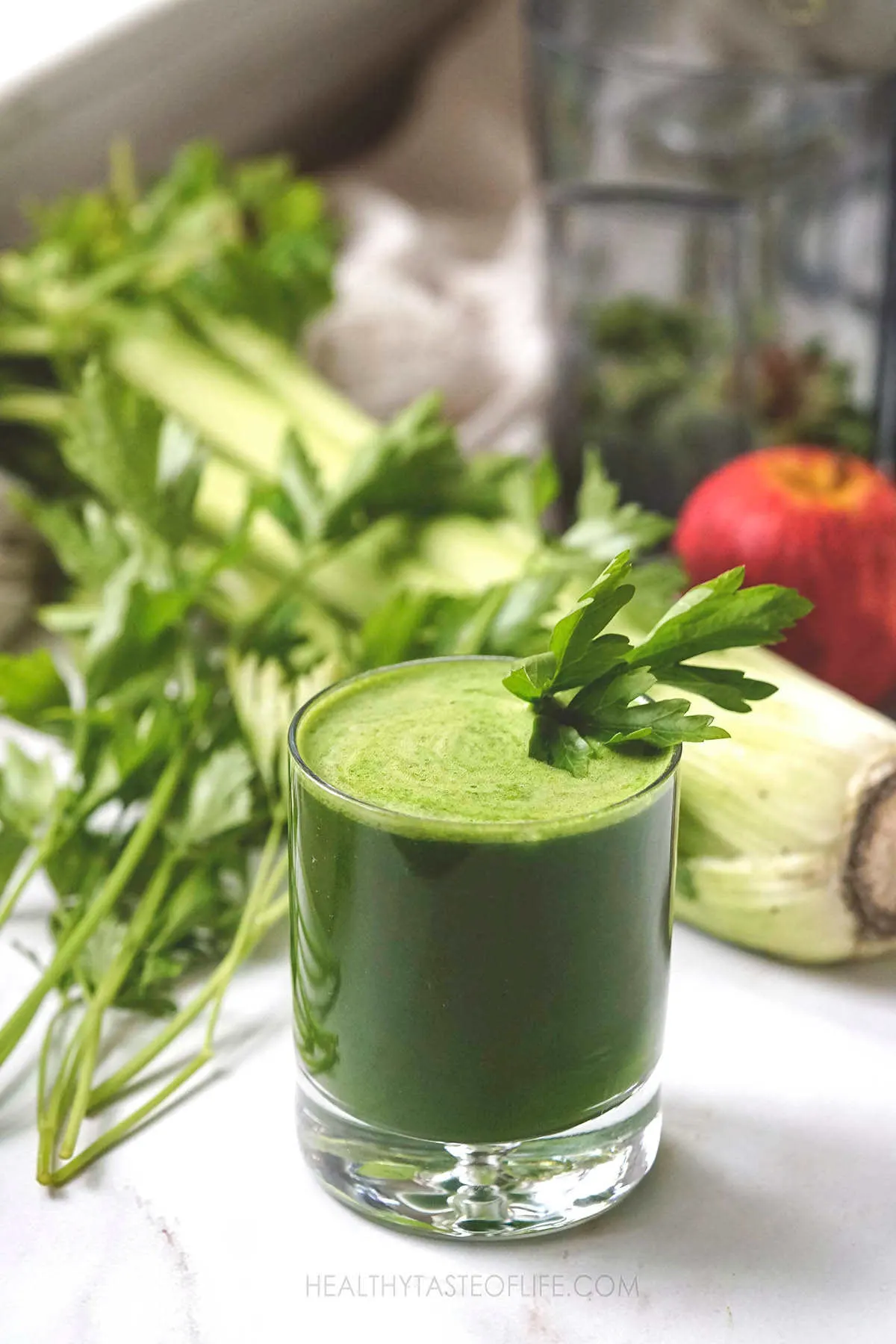
Related: Cancer Killer Juice: Pomegranate, Red Cabbage And Blueberry
Anti-inflammatory Juice Benefits
Celery, parsley, collard greens, and apples are all great anti-inflammatory foods that offer a wide range of health benefits. And there are many advantages to juicing these for inflammation:
- The inclusion of an anti-inflammatory foods through diet and juicing might regulate inflammatory symptoms thanks to increased antioxidant levels and also by altering the microflora of the intestine in a positive way.
- Juicing can help increase your intake of anti-inflammatory compounds like luteolin, apigenin, and quercetin which are in abundance in this juice recipe.
- These compounds can help reduce inflammation and improve the body’s immune response, detoxify the body, aid digestion, regulate blood sugar levels, bring pain relief for joints, reduce swelling and even provide anti-cancer benefits.
- In addition, juicing can help increase your intake of vitamins A, C, K and E, all of which are powerful antioxidants. Antioxidants can help protect the cells from damage caused by inflammation.
- Concentrating large amounts of vitamins, minerals, and other plant nutrients in one anti-inflammatory drink will help improve absorption, give your digestive system a rest while reducing inflammation.
- By introducing a green anti-inflammatory juice in the morning you will increase the green leafy vegetable consumption without eating tons of salads during the day.
Related: Celery and Pineapple Juice Recipe: A Nutrient-Packed Blend
Anti-inflammatory Green Juice Ingredients:
1. Celery
The phytochemicals present in celery help decrease the activity of proinflammatory cytokines and prevent inflammation. Additionally because of it’s powerful antioxidant characteristics, celery helps to scavenge free radicals and prevent cell damage.
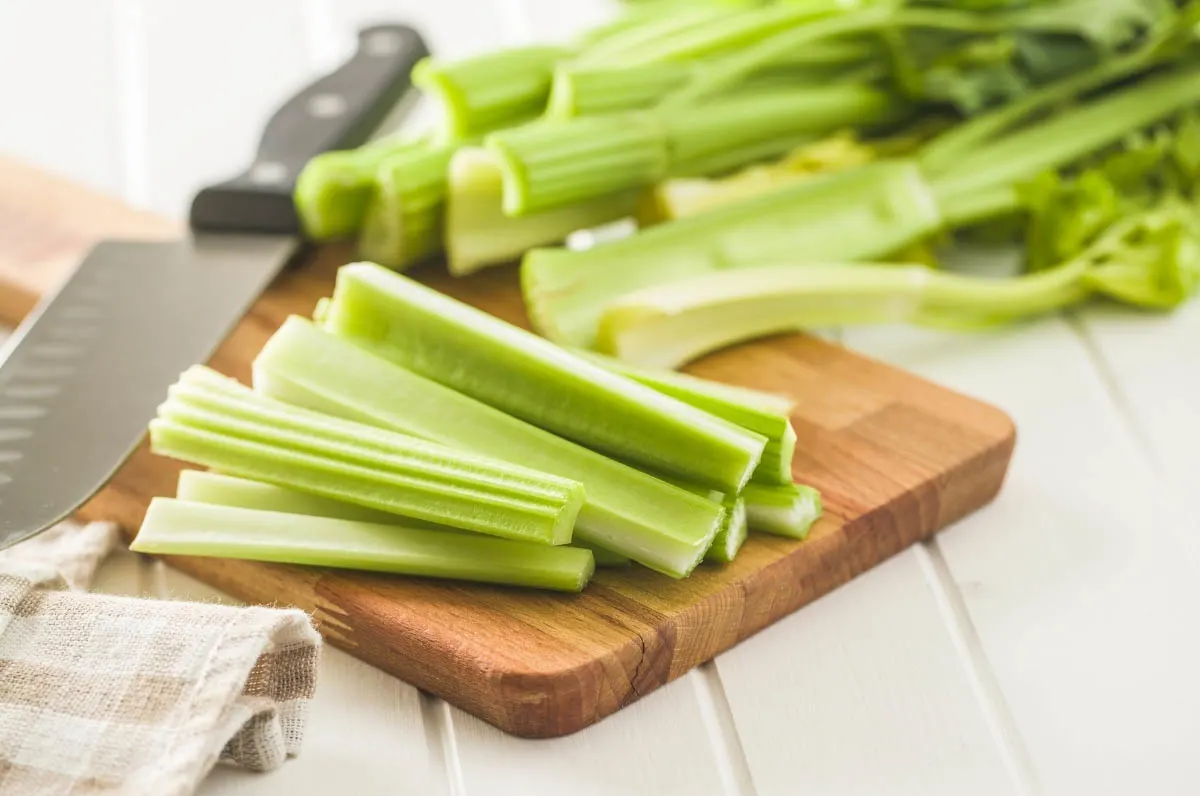
Related: Energizing Pomegranate Beetroot Juice: Benefits + Recipe
When selecting celery, look for tightly-packed stalks that are crisp enough to snap off with minimal effort. If your celery stalks have leaves don’t discard them when making the juice. Even though they have a more pungent flavor they’re actually richer in bioactive components and have a higher antioxidant capacity . Celery leaves also have higher contents of ascorbic acid and essential oils than celery stalks.
2. Collard Greens
Collard greens are an excellent source of vitamin K, C, and A as well as calcium and iron. They also contain a phytochemical called sulforaphane which is present in cruciferous vegetables (including kale, collard greens and mustard greens) that is well known for its anti-inflammatory activities and cancer reducing properties.
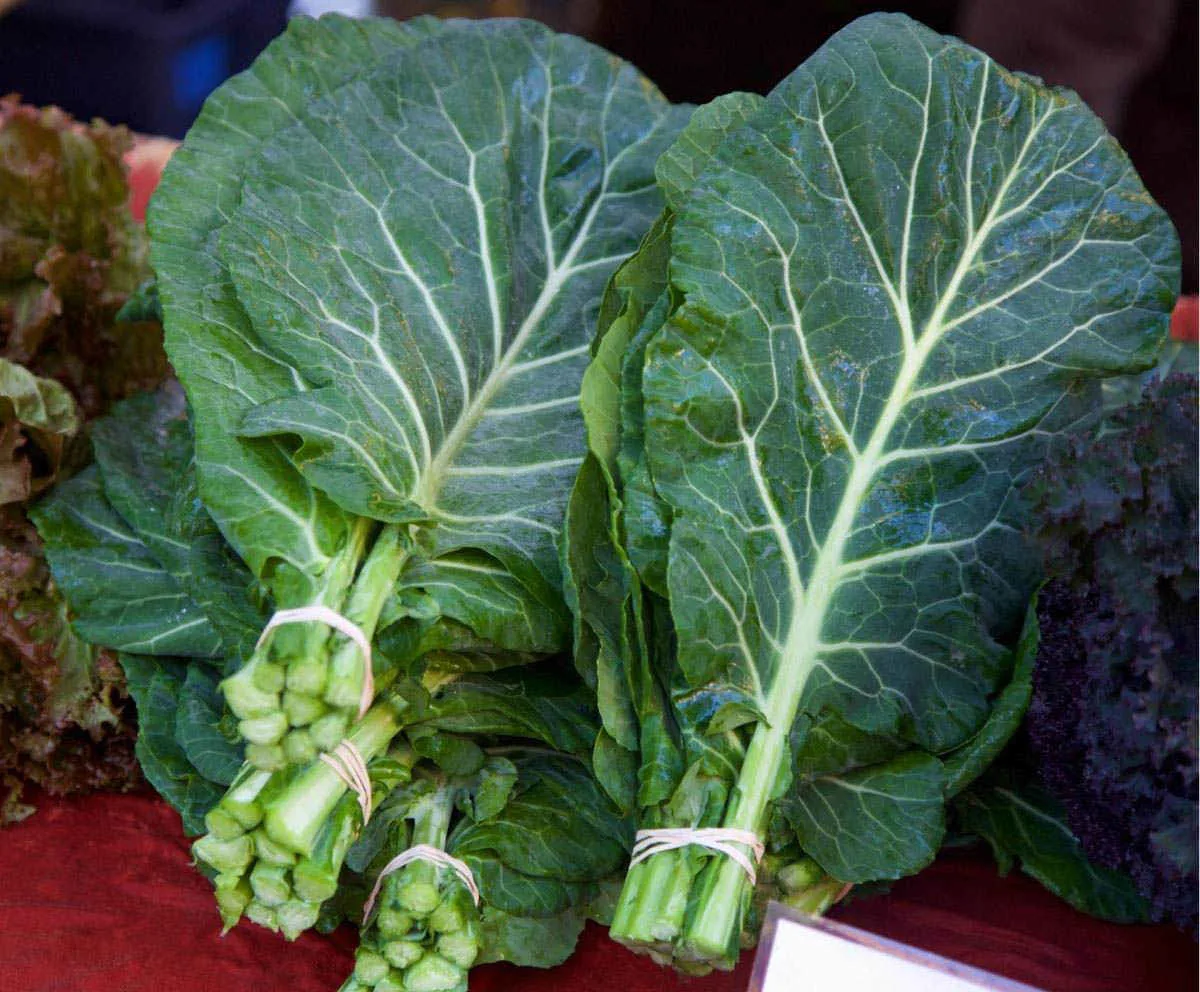
When selecting collard greens, look for dark green leaves with a slightly waxy texture. Avoid any that have yellow or brown spots.
3. Parsley
It contains a large variety of vitamins (vitamins A, C, and E) and flavonoid antioxidants. These antioxidants include carotenoids, luteolin and apigenin which are known to possess strong anti-inflammatory, antioxidant, antimicrobial and anticancer properties. Apigenin in particular has been shown to reduce inflammation in the body by inhibiting the production of pro-inflammatory cytokines.
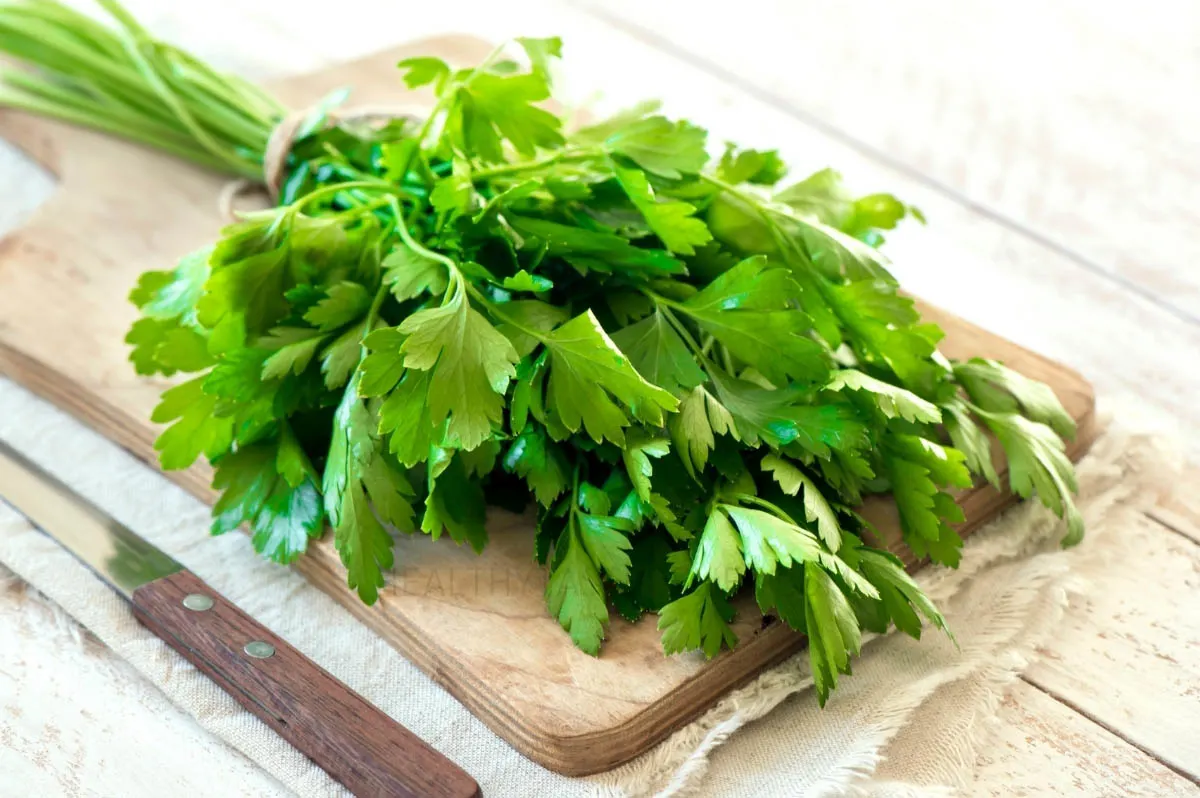
Substitutions For More Greens
If you can’t find collard greens, don’t worry. Swiss chard, kale, mustard greens and dandelion greens have a somewhat similar nutritional value with anti-inflammatory benefits! It would probably be more beneficial to use all those in rotation when making your fresh juice.
4. Apples
Apples are rich in quercetin (usually found in it’s skin), a potent anti-inflammatory flavonoid that can protect the from oxidative damage.
Moreover, apple consumption has been shown to be effective at ameliorating intestinal inflammation symptoms in chronic inflammatory bowel diseases.

When selecting apples, look for those that are tart and slightly sweet apples like Granny Smith, Braeburn or McIntosh – they usually are lower in sugar. Avoid those that are mealy or have bruises.
Celery, collards, parsley, and apple are all great anti-inflammatory foods that you can easily find at your local grocery store.
Additional Optional Ingredients:
- fresh ginger root
- fresh turmeric root
- lemon
- cucumber
- mint leaves
How To Make This Juice Recipe For Inflammation
- Wash all ingredients thoroughly. Chop celery, collards, parsley and apple into pieces that will fit easily through your juicer’s feeder chute. Core the apple but do not peel.
- Start by adding the celery, collard greens, parsley and apple to your juicer.
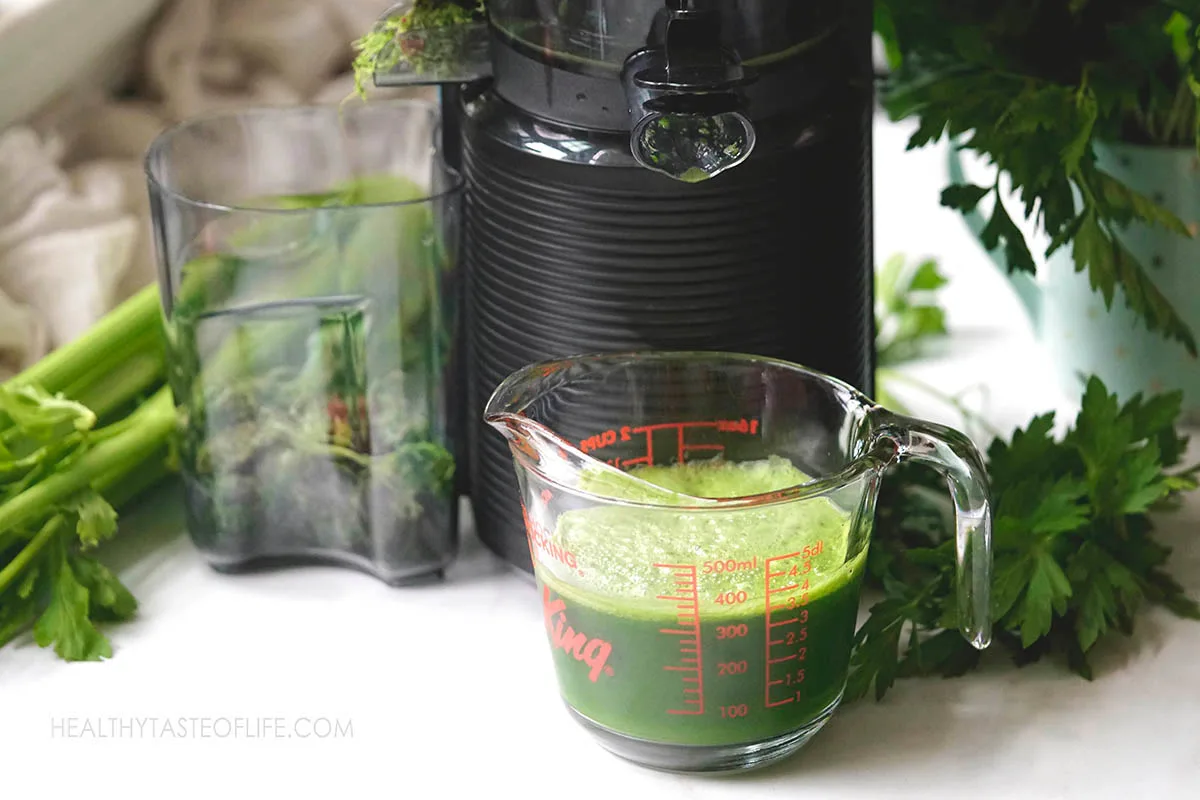
Juice Storage Tips
Once everything is juiced, drink immediately or within 30 minutes. This juice is best enjoyed fresh but can be stored in a glass airtight bottle in the fridge up to 24 hours.
If you don’t have a juicer, you can also use a blender – just make sure to add a little water to help it blend smoothly.
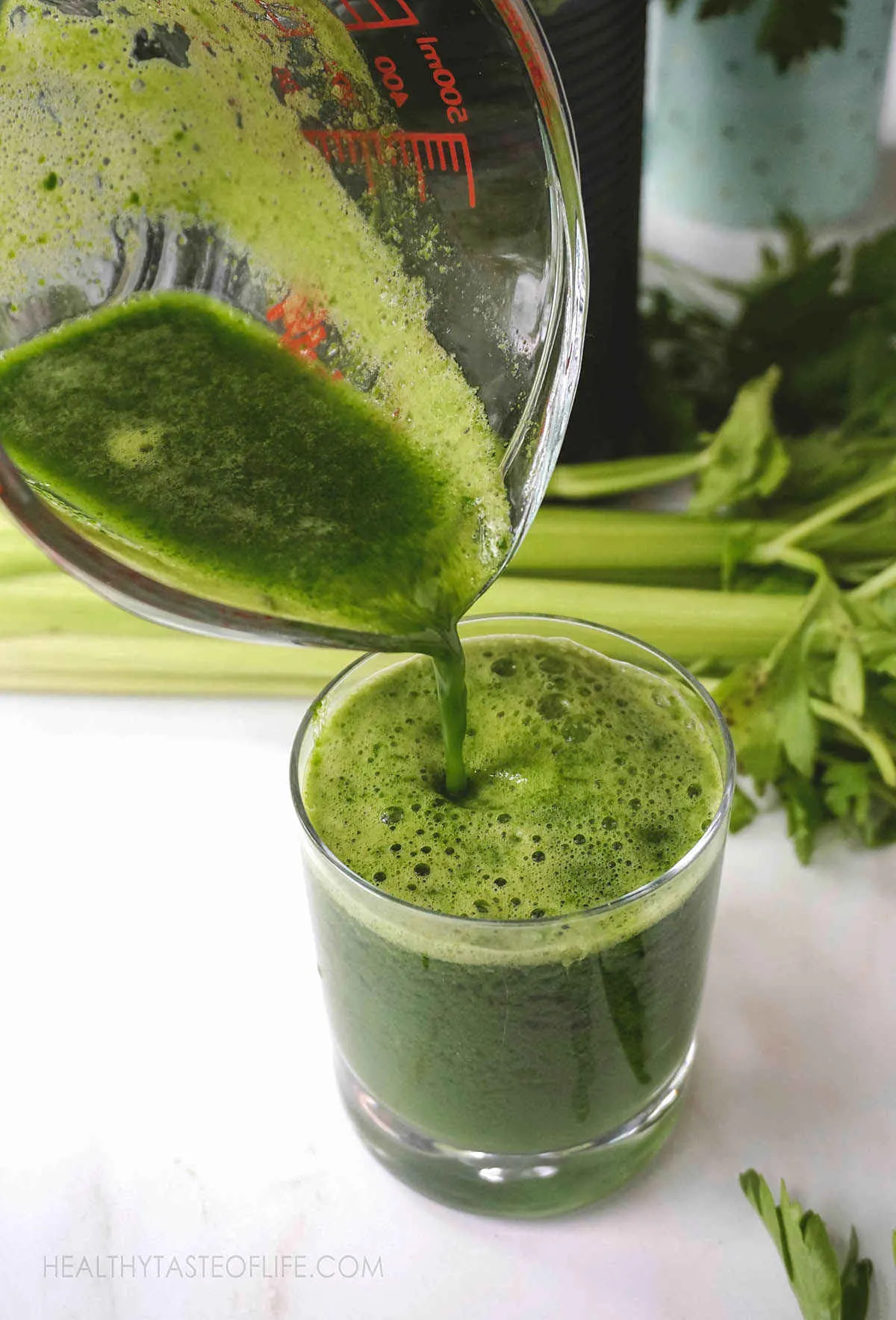
Tip To Enhance Vitamin Absorption From Juice
Dietary fat helps with the absorption of the fat-soluble vitamins. Great fat sources: oils, avocado, egg, nuts (butter or milk), fish oil capsules etc. Consume before/together or shortly after.
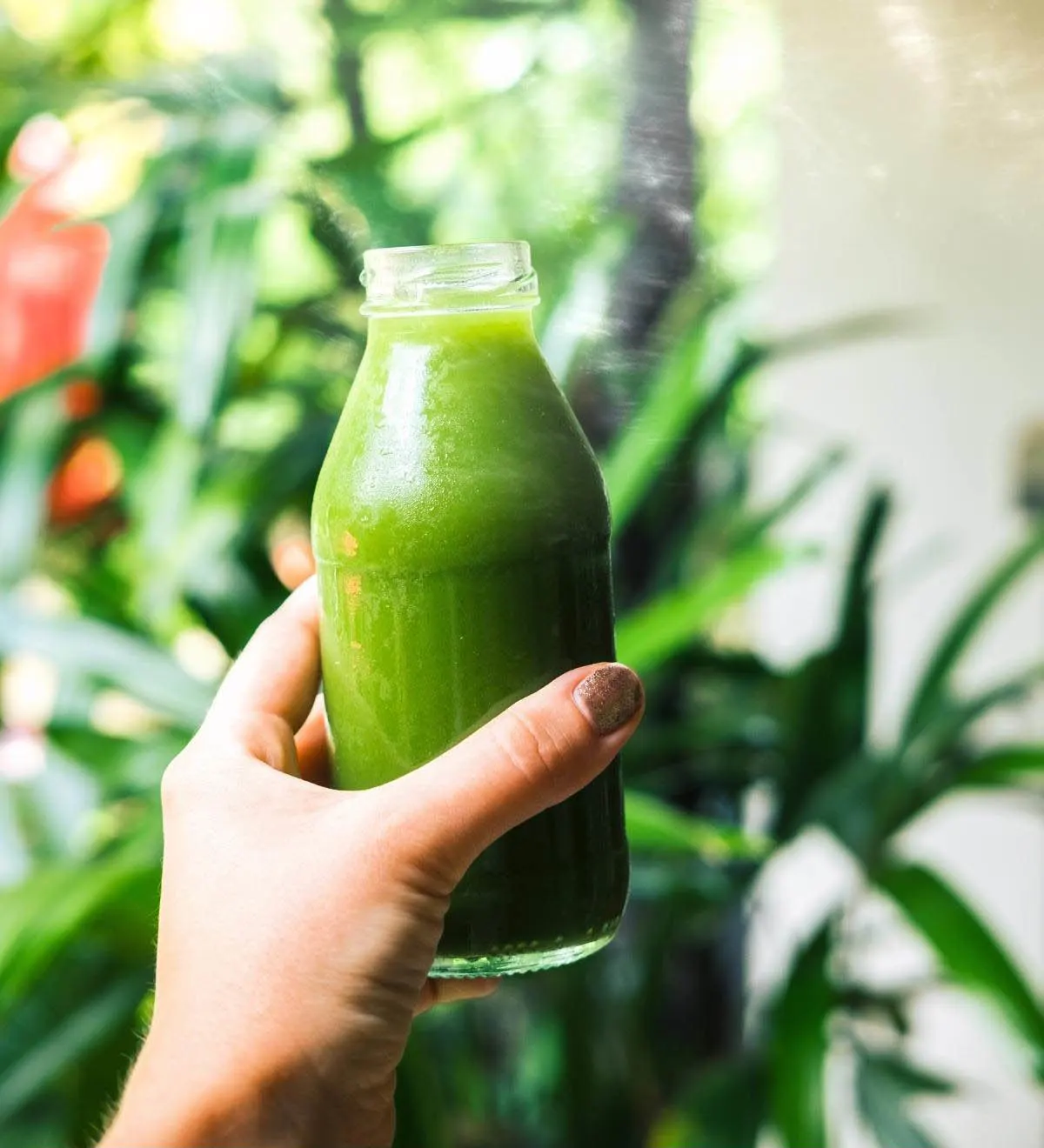
Anti-inflammatory Juice Recipe FAQs
Because obtaining the anti-inflammatory quantity of each beneficial compound through the intake of only food is pretty difficult (because you would need to eat large quantities) the most reasonable strategy is to combine several foods compacted into a glass of juice.
Yes, this recipe is suitable for people with diabetes as it is low in sugar. To make it more beneficial, use dandelion greens as substitute of collard greens. Dandelions (besides anti-inflammatory properties) have been found to have anti-diabetic effects that can help to normalize blood sugar levels.
The best juicer is a cold press slow masticating juicer because unlike centrifugal juicers, this is not exposed to metal or heat (which contributes to oxidation). I’m using a cheap masticating juicer. It yields a good amount of juice and works great with leafy veggies. Plus is easy to assemble and clean unlike other juicers with mesh filter.
Yes, you can make this juice recipe in advance but it is best enjoyed fresh (within 15-30 minutes for maximum benefits. Once the vegetables are chopped, the enzymes are activated and oxidation causes rapid nutrient loss. If you need to store it, it will keep in the fridge for up to 24 hours. Harmful bacteria can grow quickly in freshly squeezed juice.
This juice is packed with anti-inflammatory ingredients like celery, parsley, collard greens and apple – proven to have anti-inflammatory properties that could help in controlling arthritis and relieve joint pain.
Usually following a low-inflammatory diet, changes in outcomes can be observed as early as 2–4 months. But it depends on everybody’s personal medical history and whether a person suffers from chronic inflammation or an acute inflammation.
Inflammation is a key physiological process in immunity and tissue repair. Thus, we can use diet not only for nourishment, but also as medicine.
Eating anti-inflammatory foods or drinking anti-inflammatory juices is a great way to help your body fight chronic inflammation and improve the body’s immune response.
This anti-inflammatory drink recipe is easy to make and packed with ingredients that are proven to have anti inflammatory properties. Give it a try and let me know how it goes!
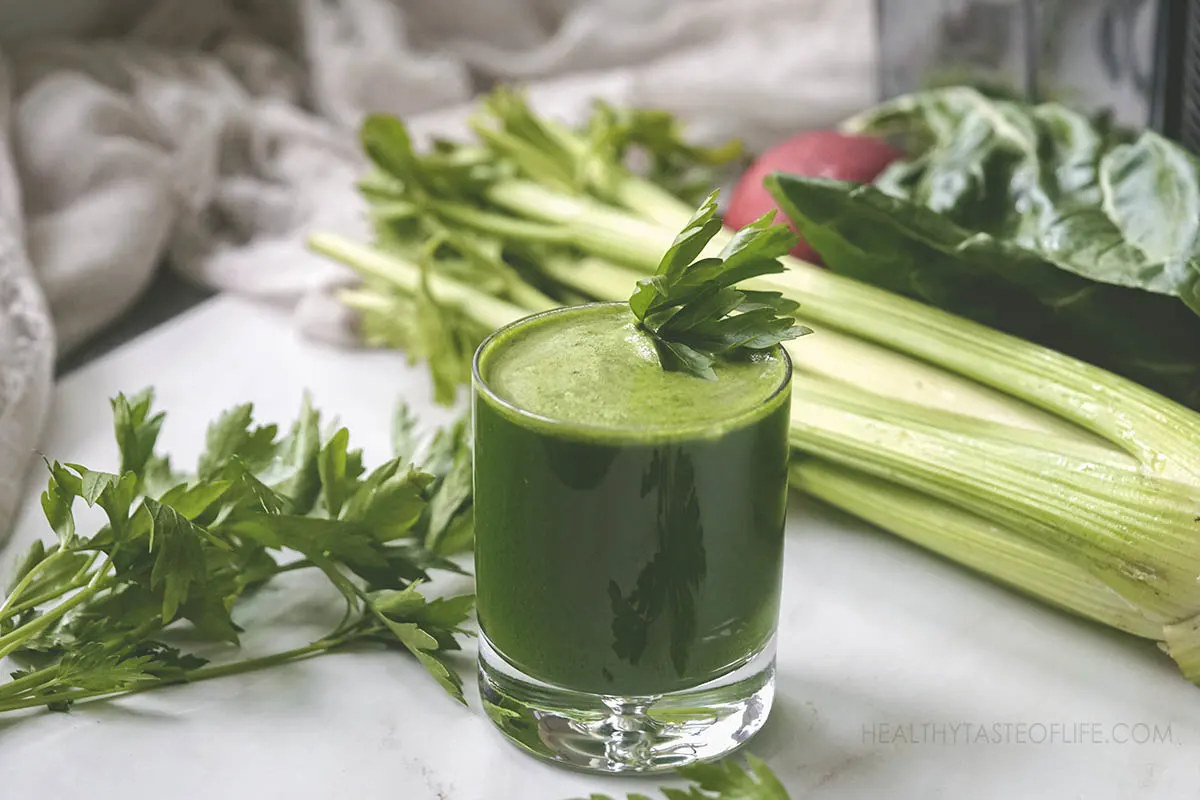
More Anti-inflammatory Drinks
- 4 Anti-Inflammatory Green Smoothie Recipes
- Cucumber Lemon Ginger Water Benefits + Recipe
- Flu Bomb Drink Recipe For Cold & Flu
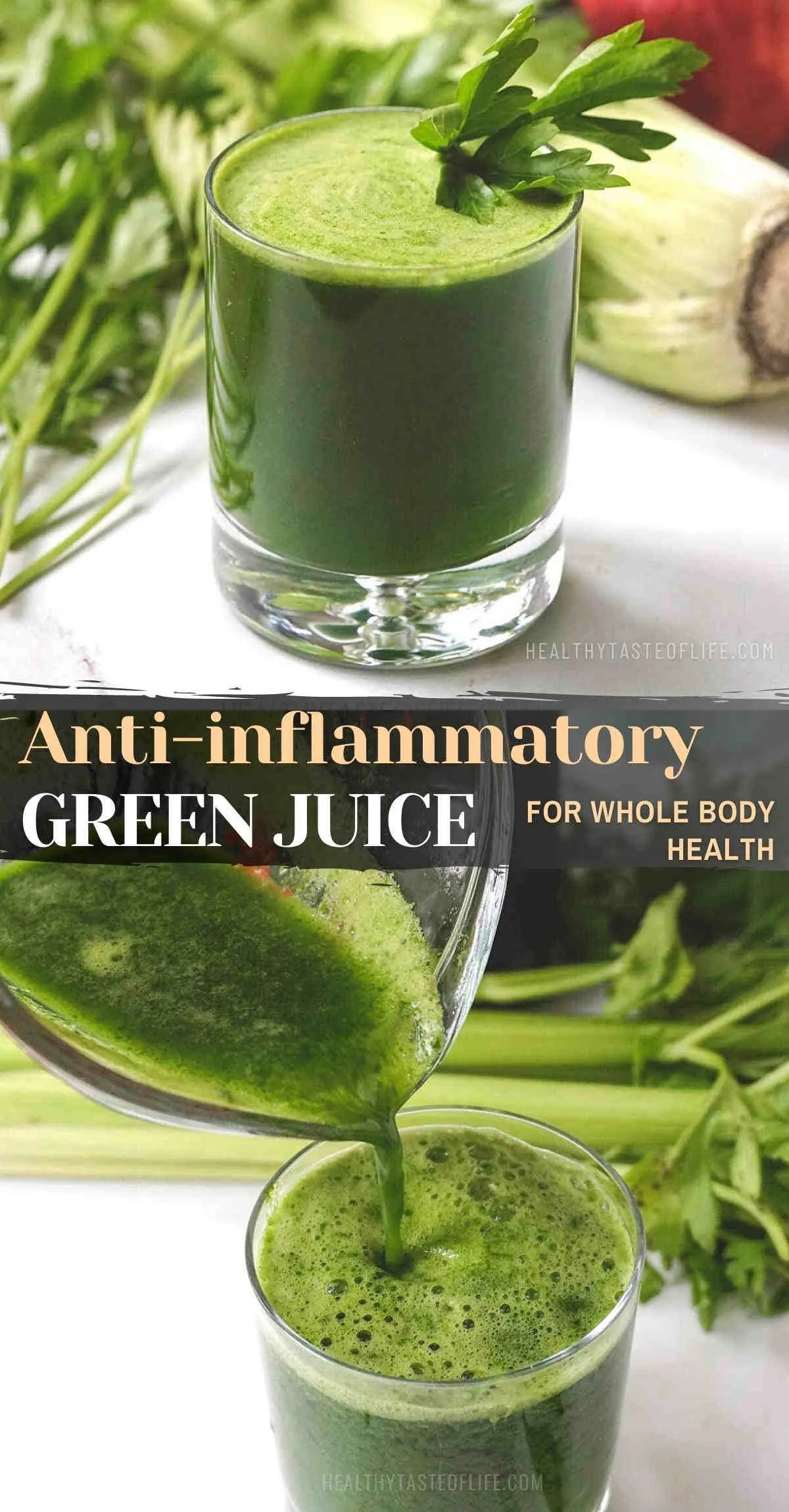
More Juice Recipes
Printable Recipe
Anti-inflammatory Juice Recipe for Whole Body Health
Ingredients
- 4 celery stalks - with or without leaves
- 3 collard green leaves
- 1/2 bunch of parsley
- 1 apple
Instructions
- Wash all ingredients thoroughly. Chop celery, collards, parsley and apple into pieces that will fit easily through your juicer’s feeder chute. Core the apple but do not peel.
- Start by adding the celery, collard greens, parsley and apple to your juicer.
- Once everything is juiced, drink immediately or within 30 minutes.
What You Need
Notes
Nutrition
The information shown is an estimate provided by an online nutrition calculator.
Disclaimer: The information, including but not limited to, text, graphics, images and other material contained on this website are for informational purposes only and should not be considered to be a specific diagnosis or treatment plan for any individual situation. Seek the direct advice of your own doctor if you have any questions or issues. Please refer to my full disclaimer for more info.
©HealthyTasteOfLife. Content and photographs are copyright protected and need prior permission to use. Copying and/or pasting full recipes to other websites and any social media is strictly prohibited. Sharing and using the link of this recipe is both encouraged and appreciated!


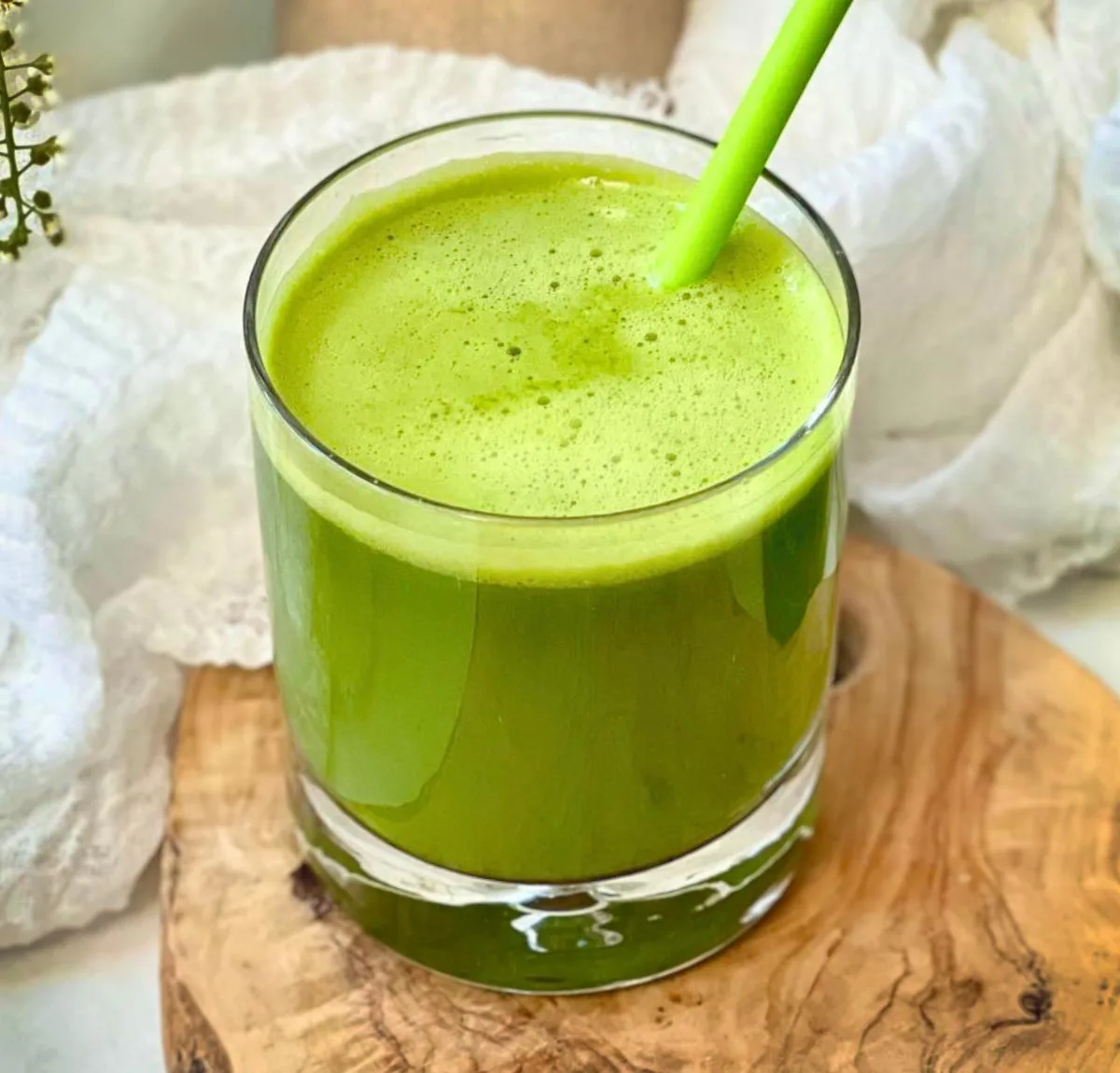
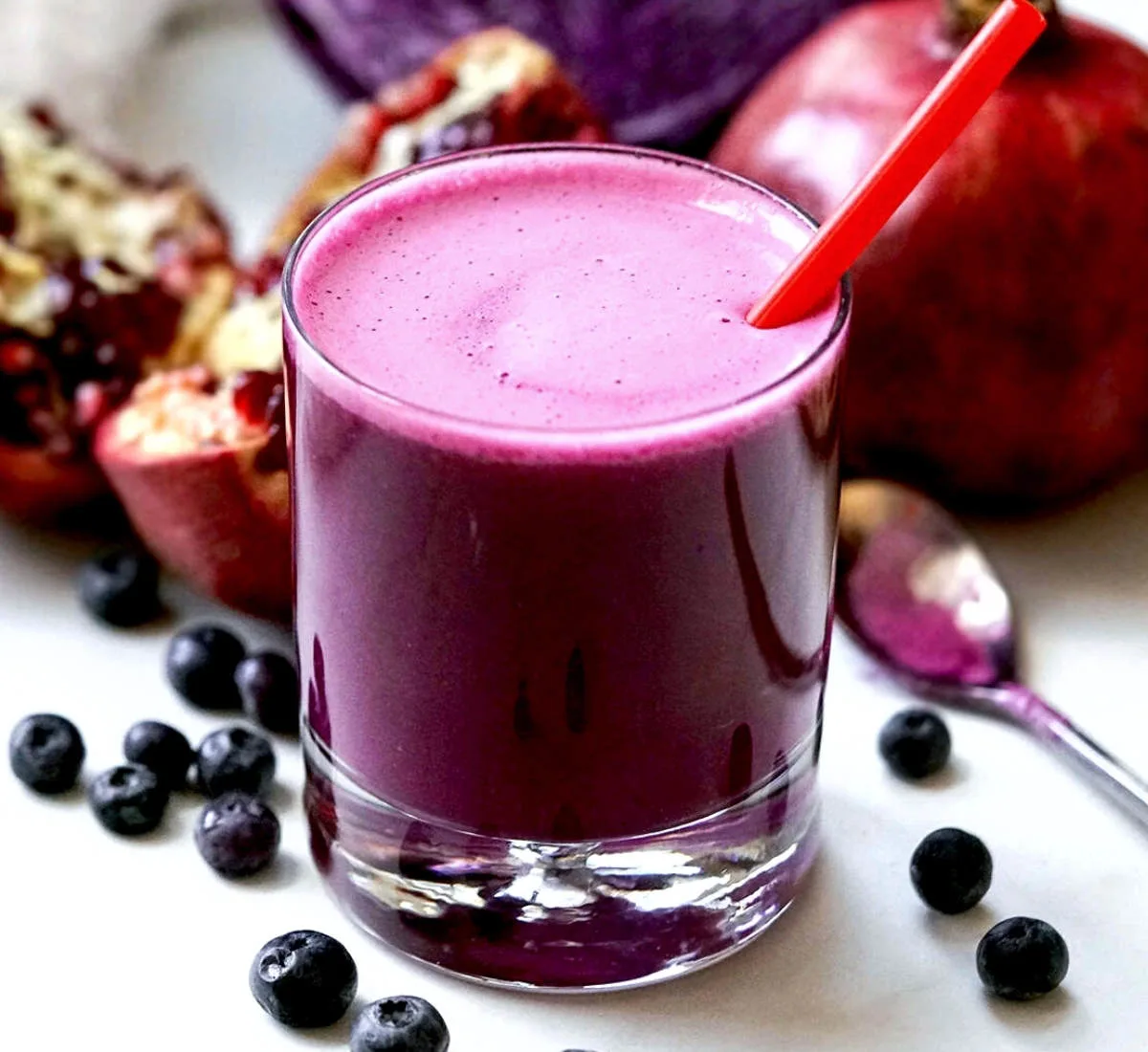
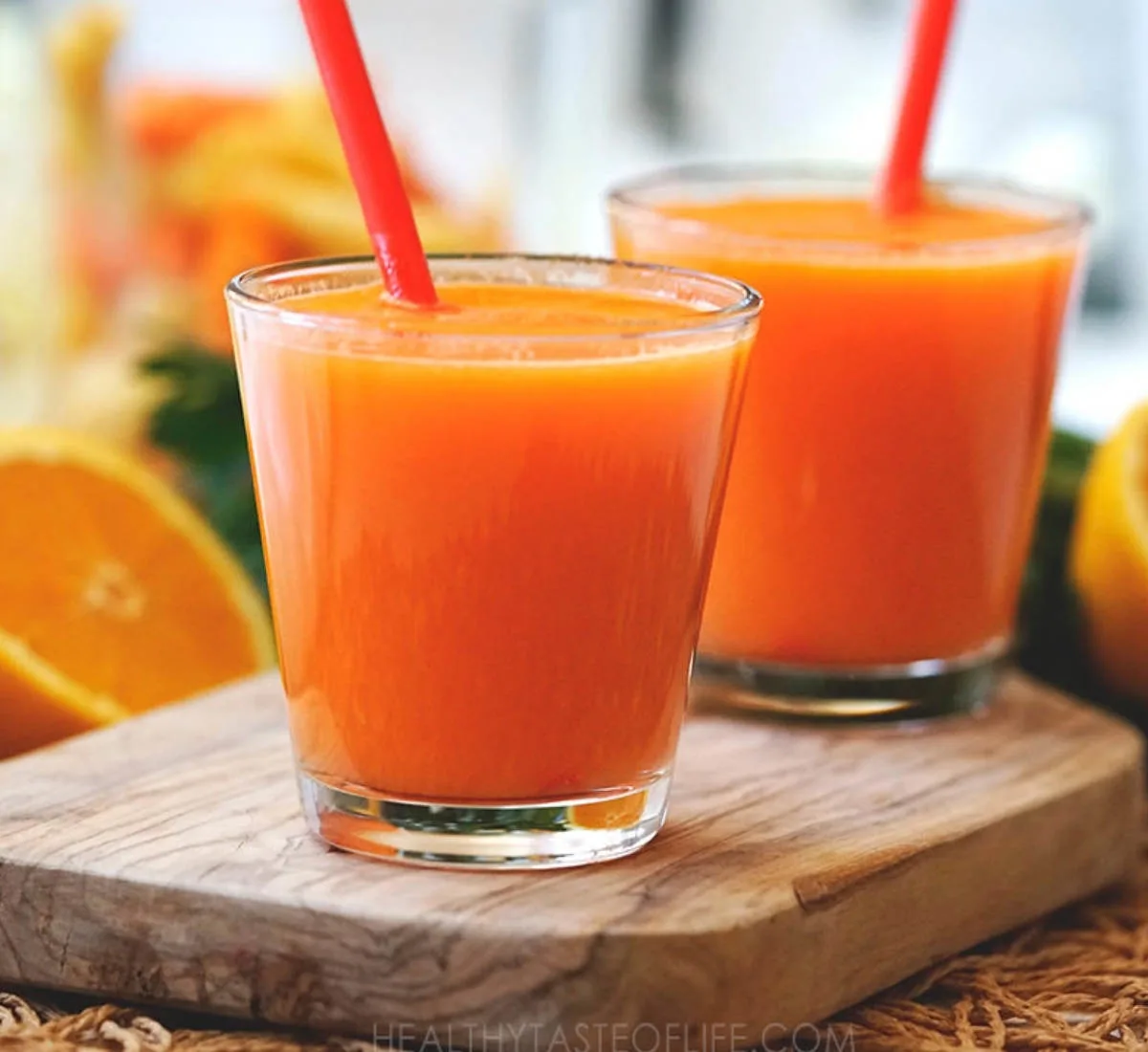

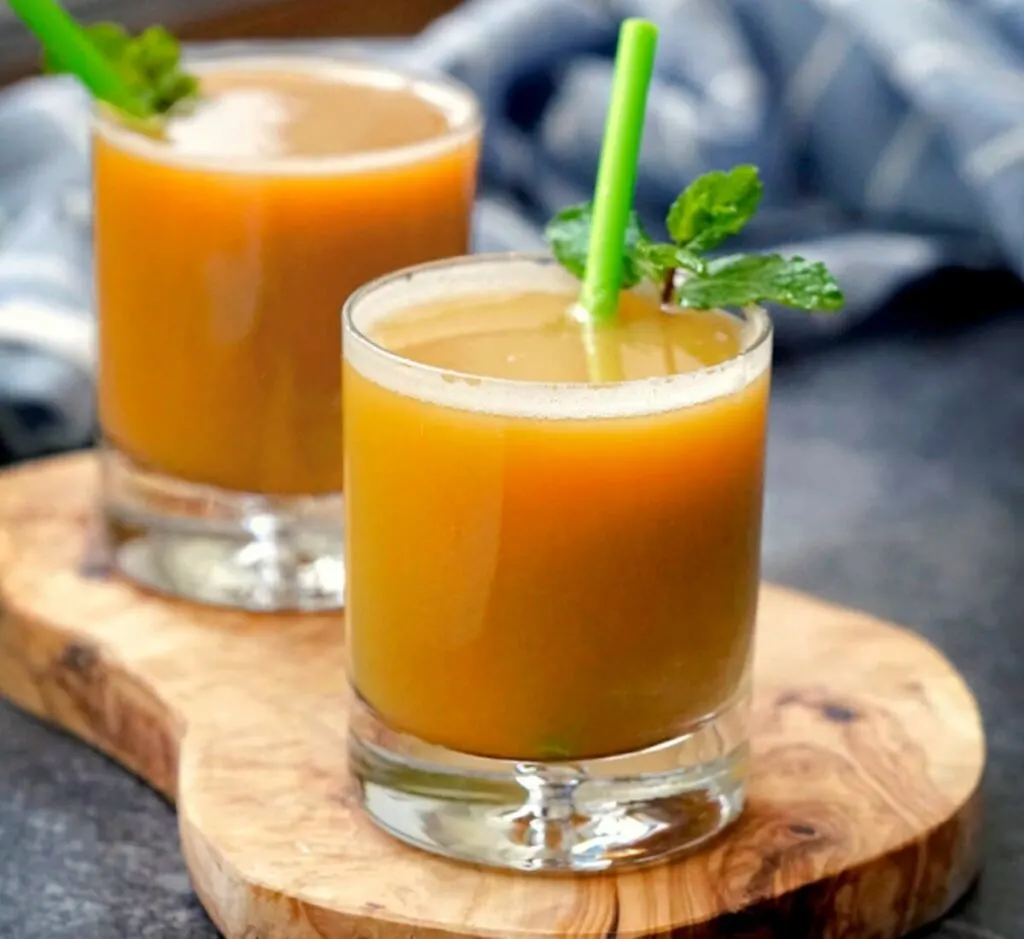
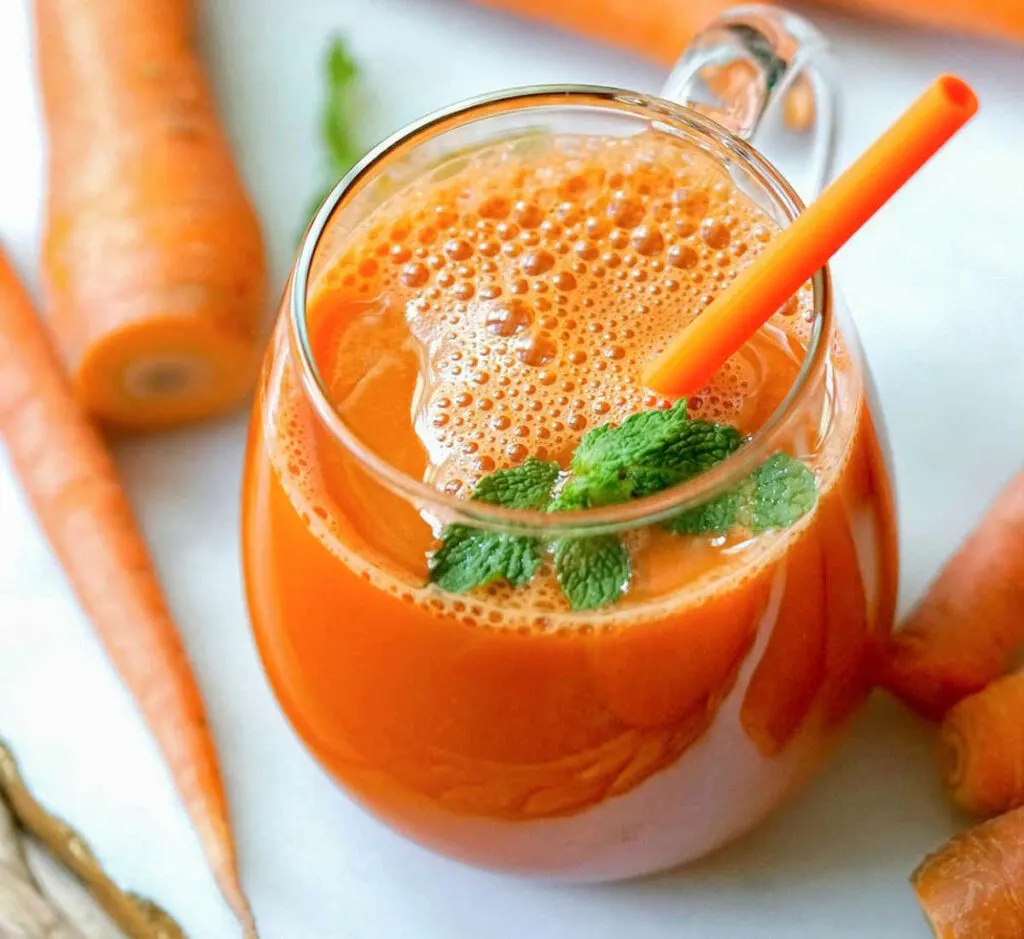


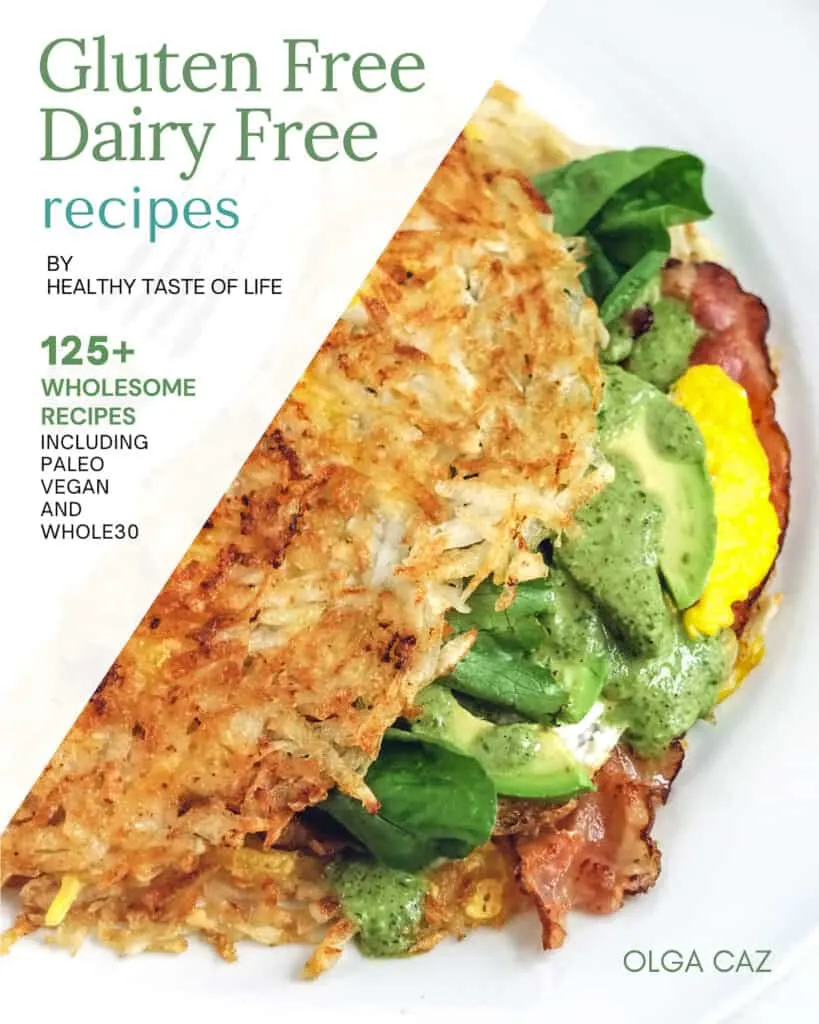
Maria
Tuesday 14th of February 2023
Hi ... I was wondering if you'd get the same benefits from using a blender instead of a juicer? I never really understood the juicer when you are throwing away so much of the plant. I just want to make sure I'm doing everything properly Thank you for your time and patience. Kindest regards Maria
HealthyTasteOfLife
Wednesday 22nd of February 2023
The juice is more benefic for people who have problems digesting fibers. It's absorbed quicker (nutrients) and you can have a proper meal about 30 minutes after. When you make a smoothie, all the fiber stays in your stomach longer and requires the work of enzymes to break them down. It will keep you full longer (1.5-2h) and may want to wait longer before you can enjoy a meal again (let's say breakfast or lunch).
Sandy
Wednesday 12th of October 2022
I couldn't find collard greens and I used some chard instead. I'm juicing the 5th day in a row already, and it feels good! Thank you for the recipe!